Enhancing the Responsivity of Uncooled Infrared Detectors Using Plasmonics for High-Performance Infrared Spectroscopy
Abstract
:1. Introduction
2. Design and Simulations
3. Fabrication
4. Experimental Setup
5. Results and Discussion
6. Conclusions
Acknowledgments
Author Contributions
Conflicts of Interest
Appendix A
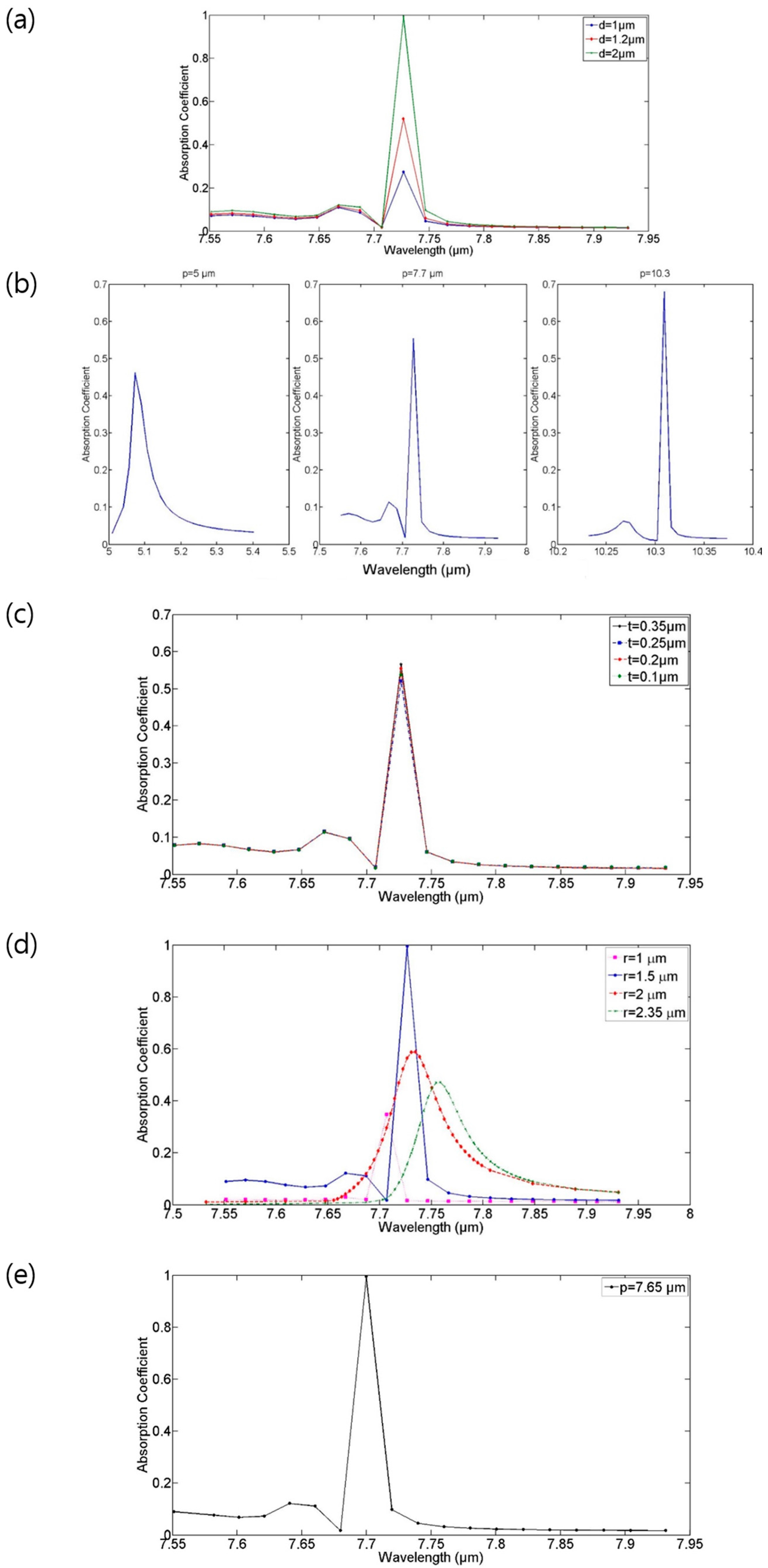
References
- Rogalski, A. Infrared detectors: Status and trends. Prog. Quantum Electron. 2003, 27, 59–210. [Google Scholar] [CrossRef]
- Muralt, P. Micromachined infrared detectors based on pyroelectric thin films. Rep. Prog. Phys. 2001, 64, 1339–1388. [Google Scholar] [CrossRef]
- Ogawa, S.; Okada, K.; Fukushima, N.; Kimata, M. Wavelength selective uncooled infrared sensor by plasmonics. Appl. Phys. Lett. 2012, 100, 021111. [Google Scholar] [CrossRef]
- Han, Y.-H.; Kim, K.-T.; Shin, H.-J.; Moon, S.; Choi, I.-H. Enhanced characteristics of an uncooled microbolometer using vanadium—tungsten oxide as a thermometric material. Appl. Phys. Lett. 2005, 86, 254101. [Google Scholar] [CrossRef]
- Wachter, E.; Thundat, T.; Oden, P.; Warmack, R.; Datskos, P.; Sharp, S. Remote optical detection using microcantilevers. Rev. Sci. Instrum. 1996, 67, 3434–3439. [Google Scholar] [CrossRef]
- Rogalski, A. Recent progress in infrared detector technologies. Infrared Phys. Technol. 2011, 54, 136–154. [Google Scholar] [CrossRef]
- Kruse, P.W. A comparison of the limits to the performance of thermal and photon detector imaging arrays. Infrared Phys. Technol. 1995, 36, 869–882. [Google Scholar] [CrossRef]
- Martyniuk, P.; Antoszewski, J.; Martyniuk, M.; Faraone, L.; Rogalski, A. New concepts in infrared photodetector designs. Appl. Phys. Rev. 2014, 1, 041102. [Google Scholar] [CrossRef]
- Oden, P.; Datskos, P.; Thundat, T.; Warmack, R. Uncooled thermal imaging using a piezoresistive microcantilever. Appl. Phys. Lett. 1996, 69, 3277–3279. [Google Scholar] [CrossRef]
- Perazzo, T.; Mao, M.; Kwon, O.; Majumdar, A.; Varesi, J.; Norton, P. Infrared vision using uncooled micro-optomechanical camera. Appl. Phys. Lett. 1999, 74, 3567–3569. [Google Scholar] [CrossRef]
- Zhao, Y.; Mao, M.; Horowitz, R.; Majumdar, A.; Varesi, J.; Norton, P.; Kitching, J. Optomechanical uncooled infrared imaging system: Design, microfabrication, and performance. J. Microelectromech. Syst. 2002, 11, 136–146. [Google Scholar] [CrossRef]
- Corbeil, J.; Lavrik, N.; Rajic, S.; Datskos, P. “Self-leveling” uncooled microcantilever thermal detector. Appl. Phys. Lett. 2002, 81, 1306–1308. [Google Scholar] [CrossRef]
- Lim, S.-H.; Choi, J.; Horowitz, R.; Majumdar, A. Design and fabrication of a novel bimorph microoptomechanical sensor. J. Microelectromech. Syst. 2005, 14, 683–690. [Google Scholar]
- Grbovic, D.; Lavrik, N.V.; Rajic, S.; Datskos, P.G. Arrays of SiO2 substrate-free micromechanical uncooled infrared and terahertz detectors. J. Appl. Phys. 2008, 104, 054508. [Google Scholar] [CrossRef]
- Kwon, I.W.; Son, H.J.; Kim, D.S.; Hwang, C.H.; Lee, Y.S.; Yu, B.-G.; Lee, H.C. A cantilever-type uncooled infrared detector with high fill-factor and low-noise characteristic. IEEE Electron Device Lett. 2009, 30, 635–637. [Google Scholar]
- Stanley, R. Plasmonics in the mid-infrared. Nat. Photonics 2012, 6, 409–411. [Google Scholar] [CrossRef]
- Maier, S.A. Plasmonics: Fundamentals and Applications; Springer Science & Business Media: New York, NY, USA, 2007. [Google Scholar]
- Barnes, W.L.; Dereux, A.; Ebbesen, T.W. Surface plasmon subwavelength optics. Nature 2003, 424, 824–830. [Google Scholar] [CrossRef] [PubMed]
- Dionne, J.; Baldi, A.; Baum, B.; Ho, C.-S.; Janković, V.; Naik, G.; Narayan, T.; Scholl, J.; Zhao, Y. Localized fields, global impact: Industrial applications of resonant plasmonic materials. MRS Bull. 2015, 40, 1138–1145. [Google Scholar] [CrossRef]
- Ogawa, S.; Komoda, J.; Masuda, K.; Kimata, M. Wavelength selective wideband uncooled infrared sensor using a two-dimensional plasmonic absorber. Opt. Eng. 2013, 52, 127104. [Google Scholar] [CrossRef]
- Berini, P. Surface plasmon photodetectors and their applications. Laser Photonics Rev. 2014, 8, 197–220. [Google Scholar] [CrossRef]
- Yamamoto, K.; Goericke, F.; Guedes, A.; Jaramillo, G.; Hada, T.; Pisano, A.P.; Horsley, D. Pyroelectric aluminum nitride micro electromechanical systems infrared sensor with wavelength-selective infrared absorber. Appl. Phys. Lett. 2014, 104, 111111. [Google Scholar] [CrossRef]
- Hodgkinson, J.; Tatam, R.P. Optical gas sensing: A review. Meas. Sci. Technol. 2012, 24, 012004. [Google Scholar] [CrossRef]
- Luft, K. Über eine neue Methode der registrierenden Gasanalyse mit Hilfe der Absorption ultraroter Strahlen ohne spektrale Zerlegung. Z. Tech. Phys. 1943, 24, 97–104. [Google Scholar]
- Linstrom, P.J.; Mallard, W. NIST Chemistry Webbook; NIST Standard Reference Database No. 69; National Institute of Standards and Technology (NIST): Gaithersburg, MD, USA, 2001. [Google Scholar]
- Rakic, A.D.; Djurišic, A.B.; Elazar, J.M.; Majewski, M.L. Optical properties of metallic films for vertical-cavity optoelectronic devices. Appl. Opt. 1998, 37, 5271–5283. [Google Scholar] [CrossRef] [PubMed]
- Qiang, R.; Chen, R.L.; Chen, J. Modeling electrical properties of gold films at infrared frequency using FDTD method. Int. J. Infrared Millim. Waves 2004, 25, 1263–1270. [Google Scholar] [CrossRef]
- Kim, H.J.; Kim, J.; Zandieh, O.; Chae, M.-S.; Kim, T.S.; Lee, J.H.; Park, J.H.; Kim, S.; Hwang, K.S. Piezoelectric layer embedded-microdiaphragm sensors for the determination of blood viscosity and density. Appl. Phys. Lett. 2014, 105, 153504. [Google Scholar] [CrossRef]
- Lee, J.-H.; Yoon, K.-H.; Kim, T.-S. Electric and longitudinal piezoelectric properties of PZT 52/48 films as a function of thickness prepared by diol based sol-gel method. Integr. Ferroelectr. 2001, 41, 119–128. [Google Scholar] [CrossRef]
- Lang, S.B. Pyroelectricity: From ancient curiosity to modern imaging tool. Phys. Today 2005, 58, 31–36. [Google Scholar] [CrossRef]


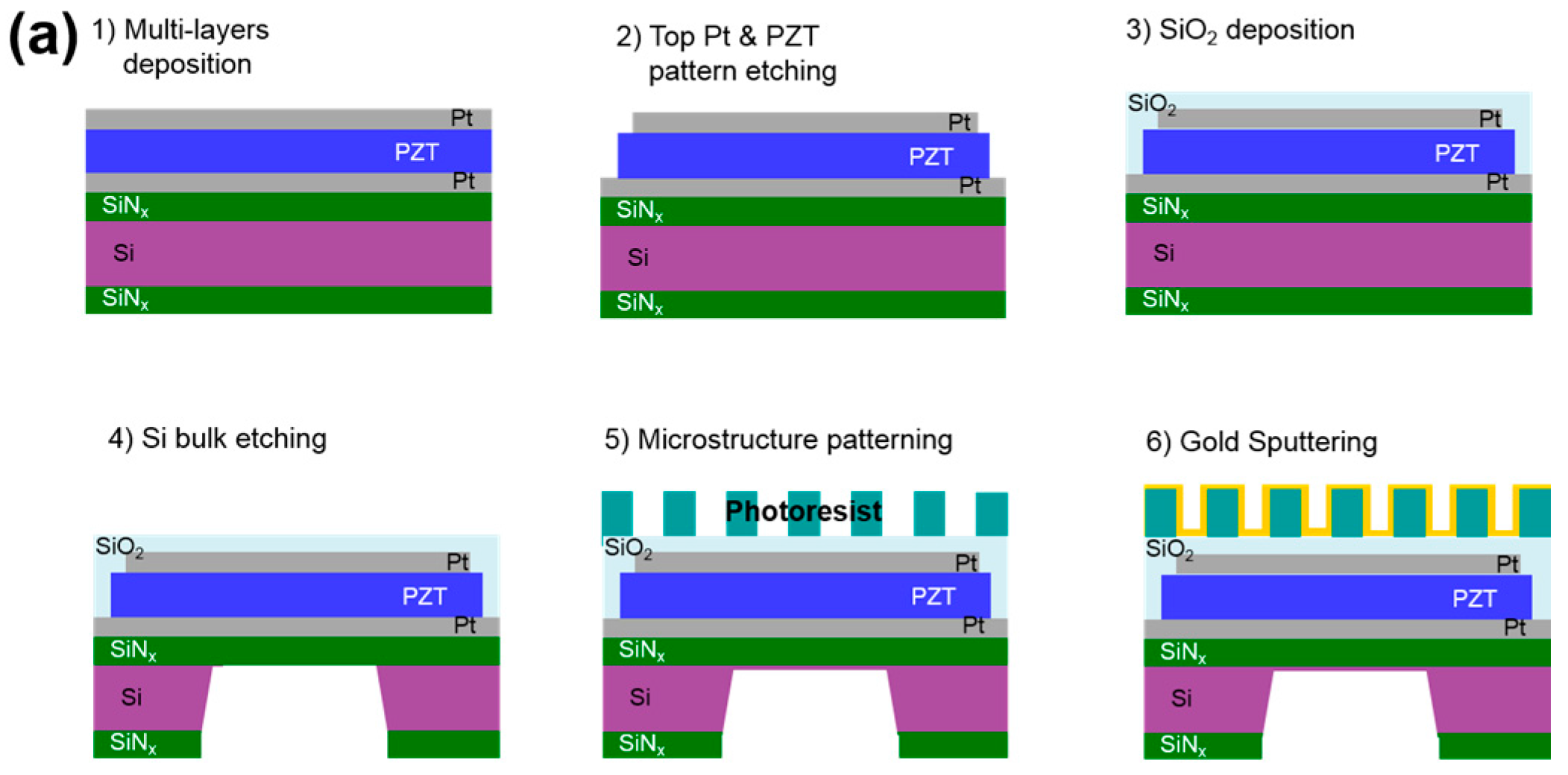
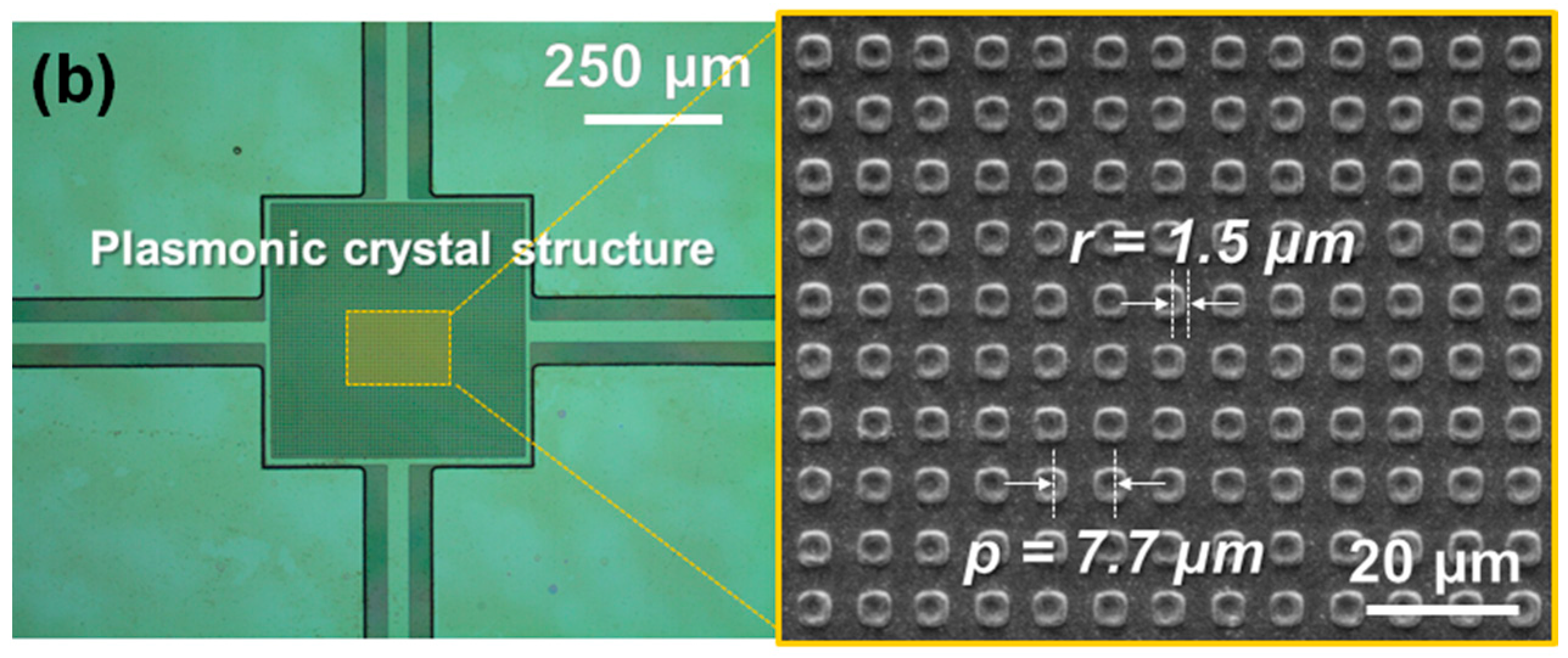
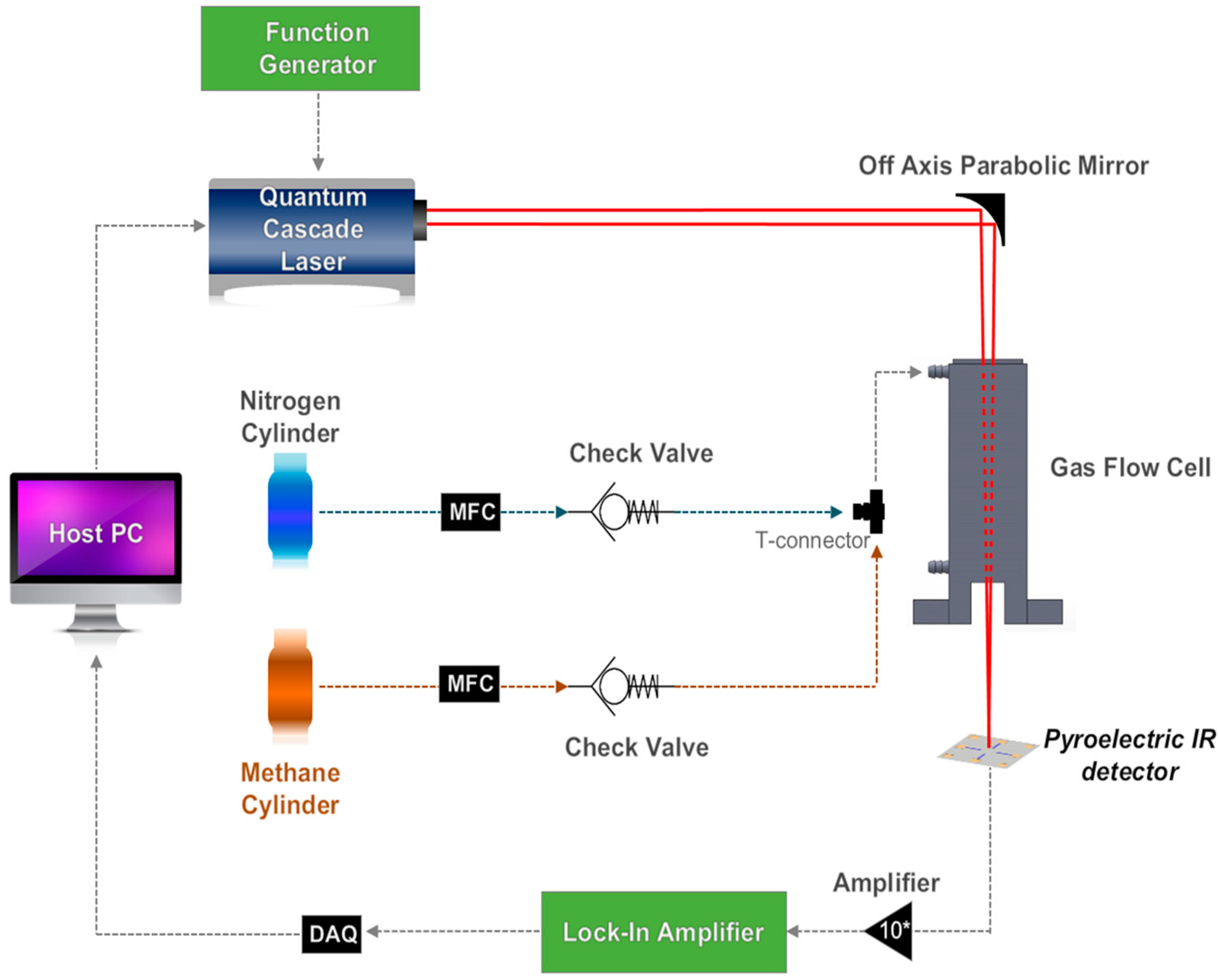
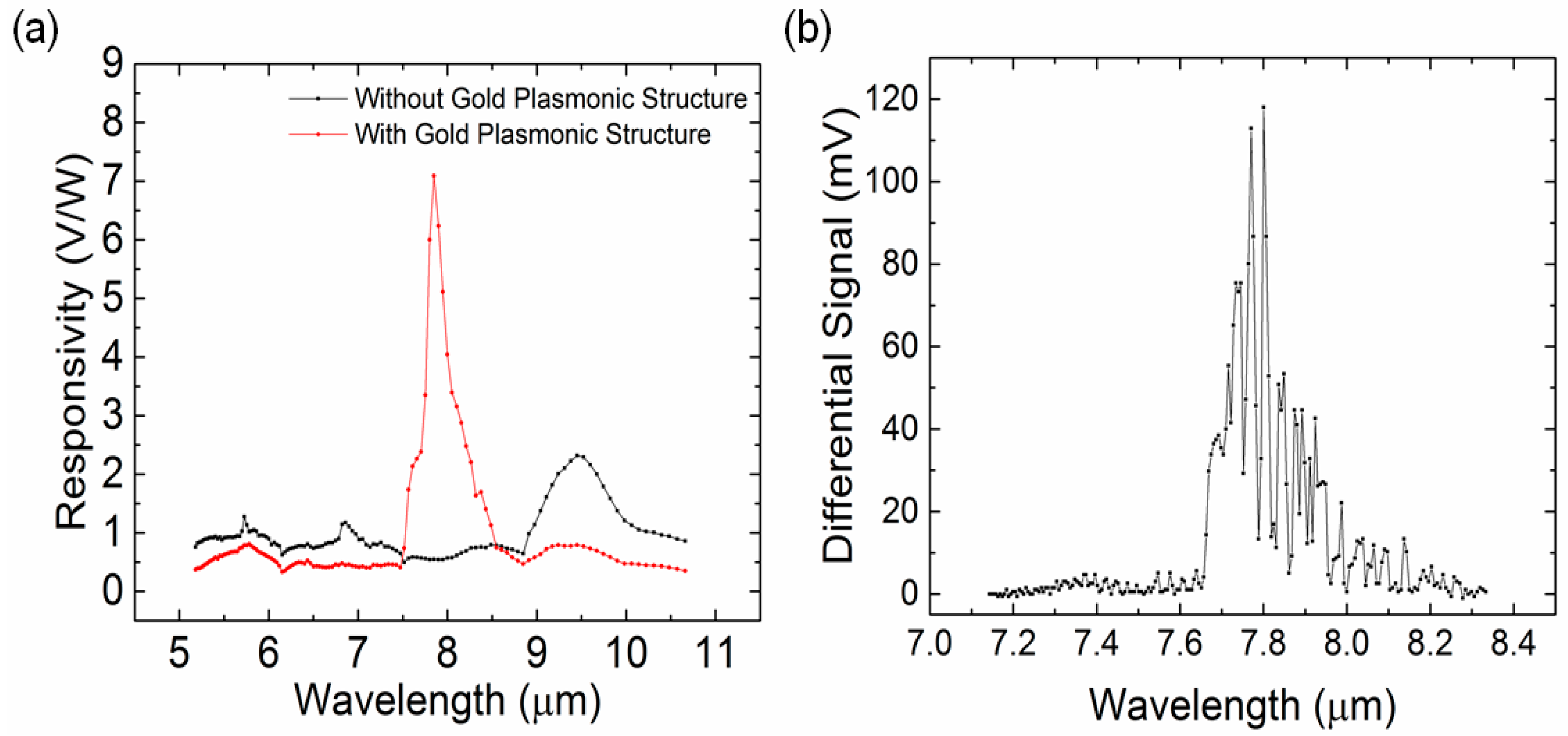
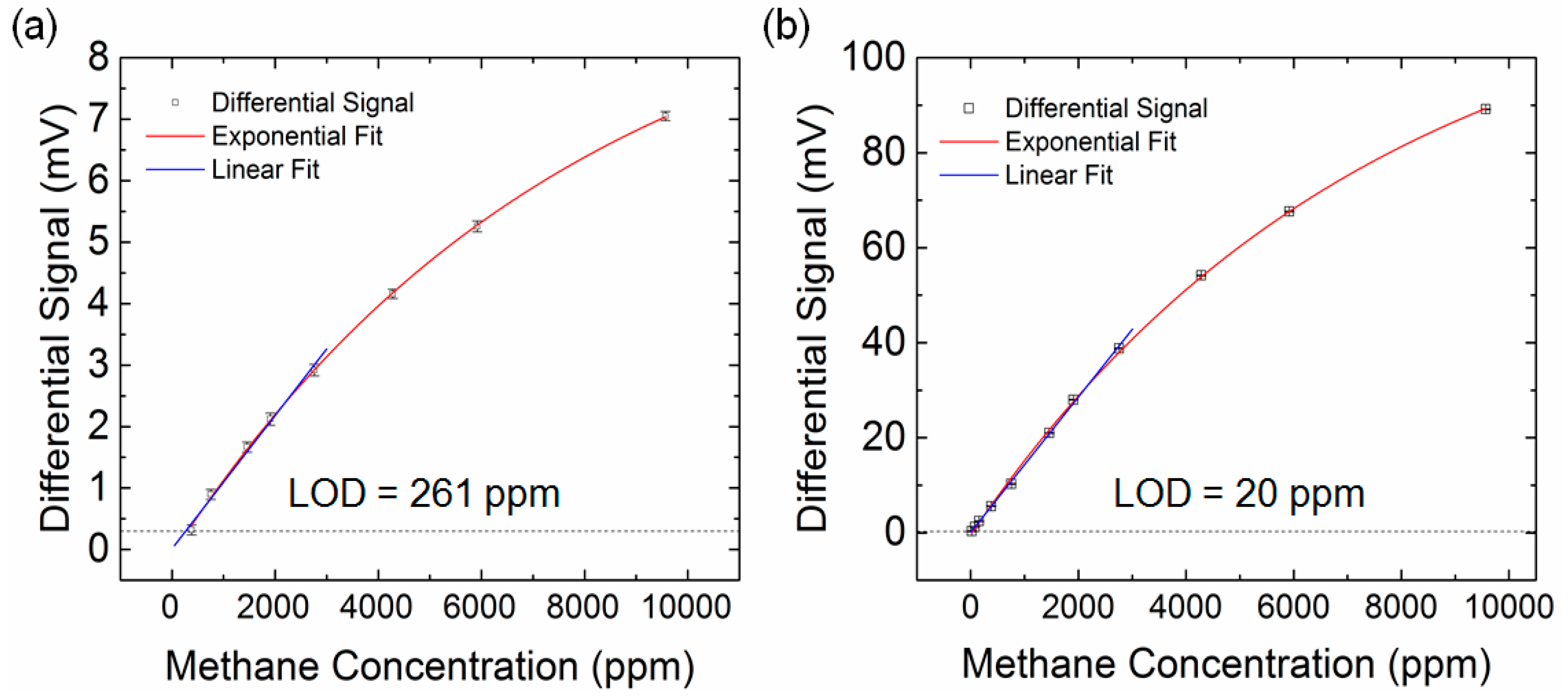
| Material | Density (kg/m3) | Thermal Conductivity (W/mK) | Specific Heat Capacity (J/kgK) |
|---|---|---|---|
| Gold | 19,300 | 110 | 129 |
| Photoresist | 1000 | 0.4 | 1000 |
| Platinum | 21,440 | 50 | 136 |
| PZT | 7900 | 3.8 | 405 |
| Silicon | 2330 | 148 | 712 |
| Silicon dioxide | 2220 | 1.46 | 750 |
| Silicon nitrate | 2400 | 4 | 700 |
© 2017 by the authors. Licensee MDPI, Basel, Switzerland. This article is an open access article distributed under the terms and conditions of the Creative Commons Attribution (CC BY) license (http://creativecommons.org/licenses/by/4.0/).
Share and Cite
Ahmed, A.S.; Kim, H.J.; Kim, J.; Hwang, K.S.; Kim, S. Enhancing the Responsivity of Uncooled Infrared Detectors Using Plasmonics for High-Performance Infrared Spectroscopy. Sensors 2017, 17, 908. https://doi.org/10.3390/s17040908
Ahmed AS, Kim HJ, Kim J, Hwang KS, Kim S. Enhancing the Responsivity of Uncooled Infrared Detectors Using Plasmonics for High-Performance Infrared Spectroscopy. Sensors. 2017; 17(4):908. https://doi.org/10.3390/s17040908
Chicago/Turabian StyleAhmed, Amr Shebl, Hye Jin Kim, Jinsik Kim, Kyo Seon Hwang, and Seonghwan Kim. 2017. "Enhancing the Responsivity of Uncooled Infrared Detectors Using Plasmonics for High-Performance Infrared Spectroscopy" Sensors 17, no. 4: 908. https://doi.org/10.3390/s17040908
APA StyleAhmed, A. S., Kim, H. J., Kim, J., Hwang, K. S., & Kim, S. (2017). Enhancing the Responsivity of Uncooled Infrared Detectors Using Plasmonics for High-Performance Infrared Spectroscopy. Sensors, 17(4), 908. https://doi.org/10.3390/s17040908







